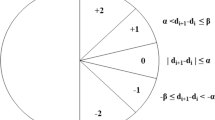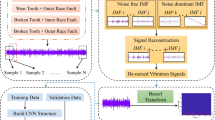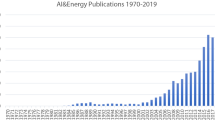Abstract
As a rich clean and environmentally friendly renewable resources, wind energy has emerged as a strategic choice for countries around the world. Because the wind turbines often operate in severe working conditions such as variable load and large temperature difference they are prone to failures and possible shutdowns. The shutdowns however seriously affect the economic benefits of the wind turbines. Initiative maintenance has become a worldwide recognized scientific method for planning and determining preventive maintenance work, the implementation of this strategy relies on real-time condition monitoring and fault signal identification methods. The condition monitoring of wind turbine can help master the health state and power generation performance of wind turbine, so as to timely formulate maintenance strategies and adopt technical modification measures to improve power generation performance, reduce the down time of wind turbine, avoid the occurrence of major faults, save maintenance cost and improve power generation capacity. Therefore, a condition monitoring system is built on a wind turbine of Zhangjiakou, and a systematic signal analysis method is proposed, time-domain synchronous averaging technology, based on variable period, impulse signal feature extraction technology based on Teager and signal decomposition technology based on CEEMD. The proposed method realizes the signal analysis and feature extraction of non-stationary nonlinear, weak signal and frequency aliasing signals, and successfully diagnose the gearbox secondary meshing failure during the long-term monitoring. This confirms that the monitoring system methods and signal analysis technology proposed in this paper can effectively realize the condition monitoring and fault diagnosis of wind turbines.












Similar content being viewed by others
References
Jauch, C., Sørensen, P., Norheim, I., et al. (2007). Simulation of the impact of wind power on the transient fault behavioFr of the Nordic power system[J]. Electric power systems Research, 77(2), 135–144.
Ding, H., & Kahraman, A. (2007). Interactions between nonlinear spur gear dynamics and surface wear[J]. Journal of Sound & Vibration, 37(3), 662–679.
Herbert, G. M. J., Iniyan, S., & Goic, R. (2010). Performance, reliability and failure analysis of wind farm in a developing country[J]. Renewable Energy, 35(12), 2739–2751.
Yang, W., Tavner, P. J., Crabtree, C. J., et al. (2010). Cost-effective condition monitoring for wind turbines[J]. IEEE Transactions on industrial electronics, 57(1), 263–271.
Ding, K., Zhu, X. Y., & Chen, Y. H. (2001). The vibration characteristics of typical gearbox faults and its diagnosis plan[J]. Journal of Vibration and Shock, 20(3), 7–12.
Fan, W., & Liu, X. G. (2011). Design of PC104-based wind turbine state monitoring system[J]. Electric Power Automation Equipment, 31(12), 106–109.
Tang, G. J., & Wang, X. L. (2015). Adaptive maximum correlated kurtosis deconvolution method and its application on incipient fault diagnosis of bearing[J]. Proceedings of the CSEE, 35(6), 1436–1444.
Harmouche, J., Delpha, C., & Diallo, D. (2015). Incipient fault detection and diagnosis based on Kullback-Leibler divergence using Principal Component Analysis: Part I[J]. Signal Processing, 109(1), 334–344.
Liu, X. Q., Wang, F., Shi, W. G., et al. (2010). Operation Condition classification method for wind turbine based on support vector machine[J]. ACTA Energiae Solaris Sinica, 31(9), 1191–1197.
Tang, B., Liu, W., & Song, T. (2010). Wind turbine fault diagnosis based on Morlet wavelet transformation and Wigner-Ville distribution[J]. Renewable Energy, 35(12), 2862–2866.
Hameed, Z., Hong, Y. S., Cho, Y. M., et al. (2009). Condition monitoring and fault detection of wind turbines and related algorithms: A review[J]. Renewable and Sustainable Energy Reviews, 13, 1–39.
Chaari, F., Fakhfakh, T., & Haddar, M. (2006). Dynamic analysis of a planetary gear failure caused by tooth pitting and cracking[J]. Journal of Failure Analysis and Prevention, 6(2), 52–60.
Chen, C. Z., Sun, X. M., Gu, Q., et al. (2013). Wavelet-based multifractal analysis of large scale wind turbine main bearing[J]. Journal of Renewable and Sustainable Energy, 5(1), 1–8.
Huang, Q., Jiang, D., Hong, L., et al. (2008). Application of wavelet neural networks on vibration fault diagnosis for wind turbine gearbox[C] (pp. 313–320). International Symposium on Neural Networks: Advances in neural networks. Springer-Verlag.
Tang, X. A., Xie, Z. M., Wang, Z., et al. (2007). Fault diagnosis of gearbox for wind turbine[J]. Noise and Vibration Control, 27(1), 120–124.
Liu, W. Y., Zhang, W. H., Han, J. G., & Wang, G. F. (2012). A new wind turbine fault diagnosis method based on the local mean decomposition. Renewable Energy, 48, 411–415.
Randall R.B. (1986). Analysis techniques for diagnosis of gear and bearing faults[C]. In Proceedings of CAMDT 86. Shenyang China, 387–393.
Forestier, G., Lalys, F., Riffaud, L., Trelhu, B., & Jannin, P. (2012). Classification of surgical processes using dynamic time warping. Journal of biomedical informatics, 45(2), 255–264.
Acknowledgement
This work was supported by the National Key Research and Development Program of China(2018YFB0904005), and Science and Technology Project of State Grid (SGDK0000NYJS1803505).
Author information
Authors and Affiliations
Contributions
CONCEPTION: QIN Shiyao, and FU Deyi. INTERPRETATION OR ANALYSIS OF DATA: QIN Shiyao. PREPARATION OF THE MANUSCRIPT: WANG Ruiming. REVISION FOR IMPORTANT INTELLECTUAL CONTENT: WANG Ruiming. SUPERVISION: QIN Shiyao, and FU Deyi.
Corresponding author
Ethics declarations
Conflict of Interest
The author(s) declared no potential conflicts of interest with respect to the research, author- ship, and/or publication of this article.
Availability of Data and Materials
The datasets used and analyzed during the current study are available from the corresponding author on reasonable request
Additional information
Publisher's Note
Springer Nature remains neutral with regard to jurisdictional claims in published maps and institutional affiliations.
Rights and permissions
About this article
Cite this article
QIN, S., WANG, R. & FU, D. Research on Wind Turbines Fault Diagnosis Technology Based on CMS Data Feature Extraction. Wireless Pers Commun 127, 271–291 (2022). https://doi.org/10.1007/s11277-021-08261-1
Accepted:
Published:
Issue Date:
DOI: https://doi.org/10.1007/s11277-021-08261-1




